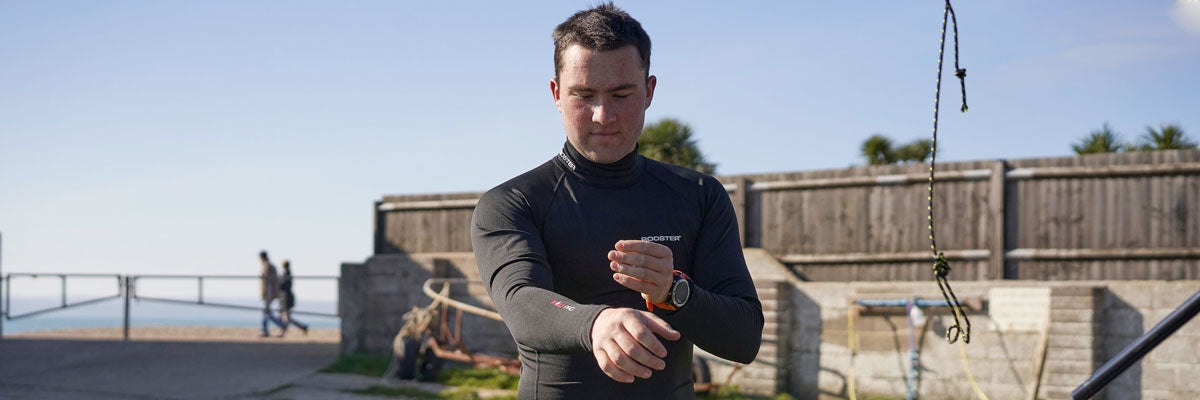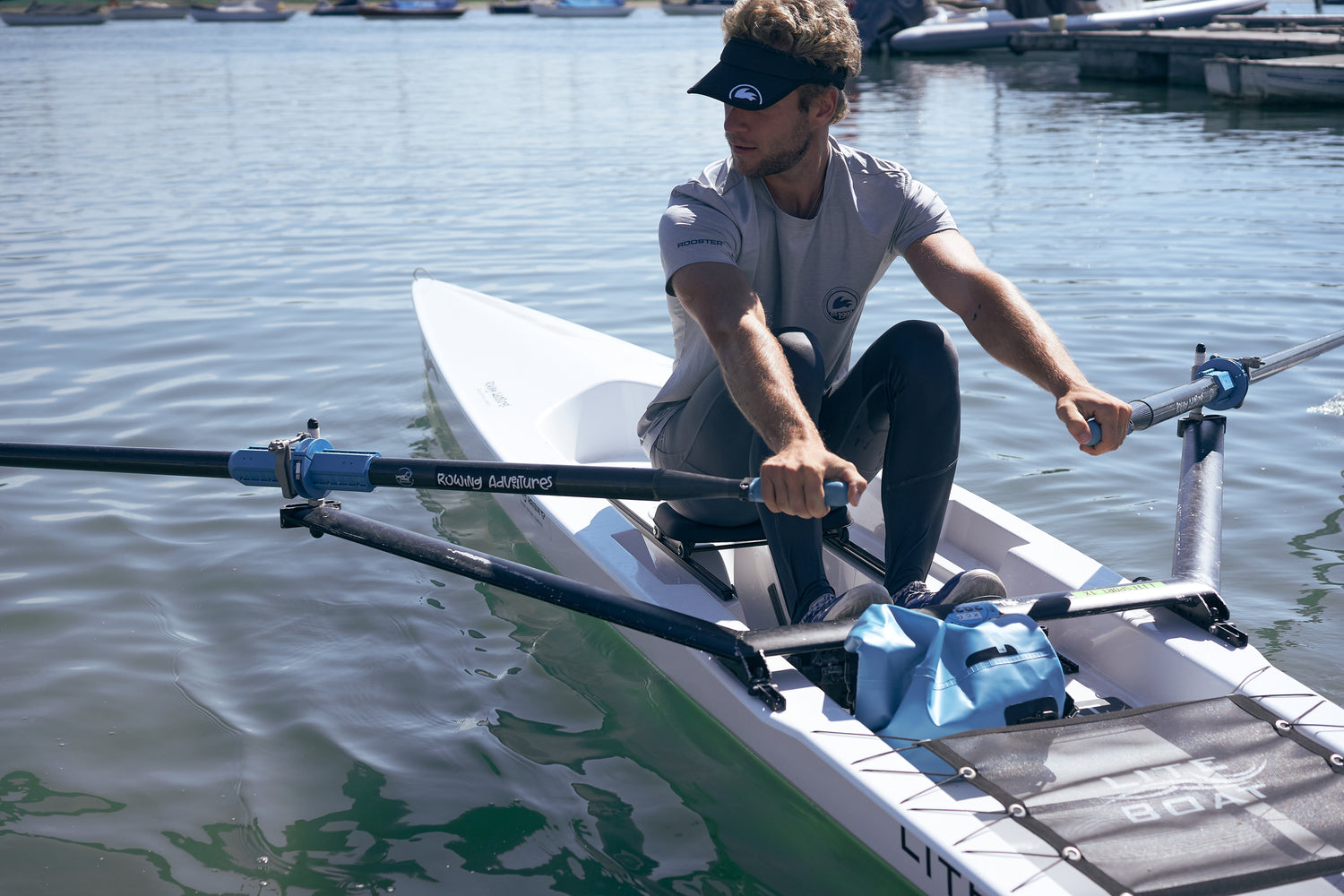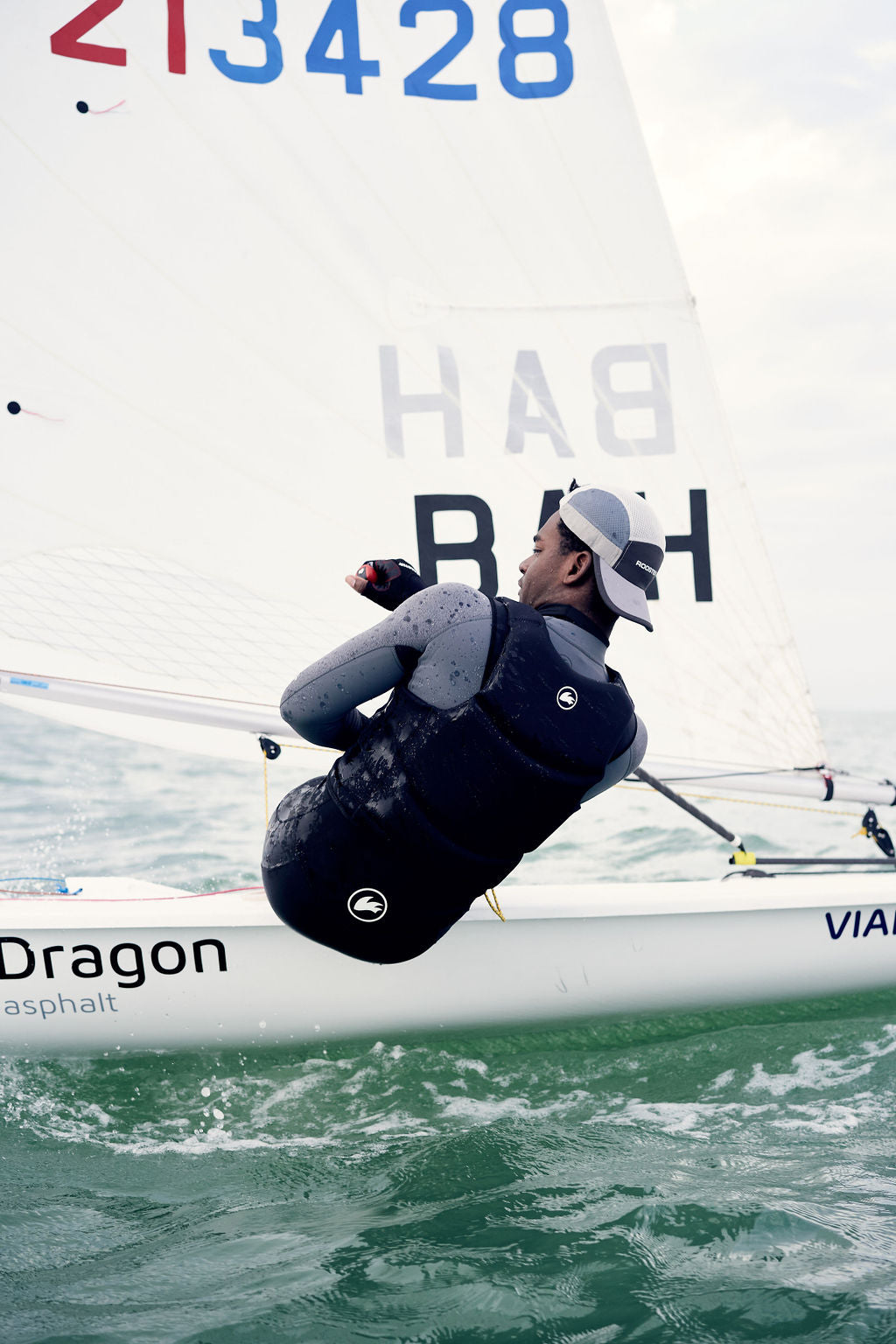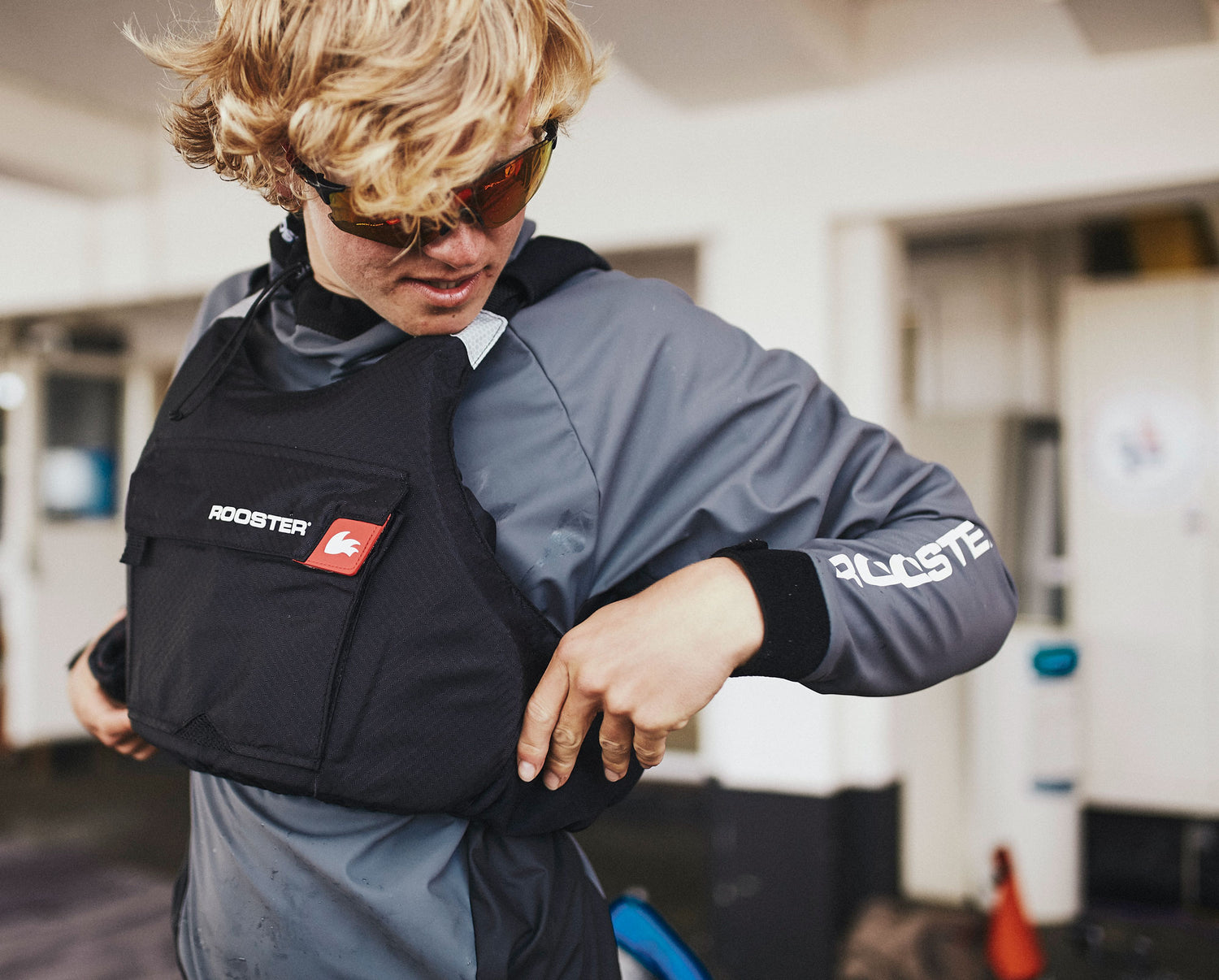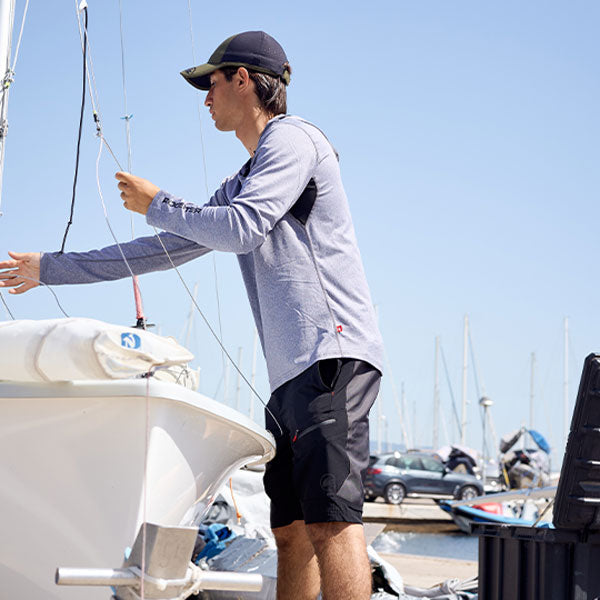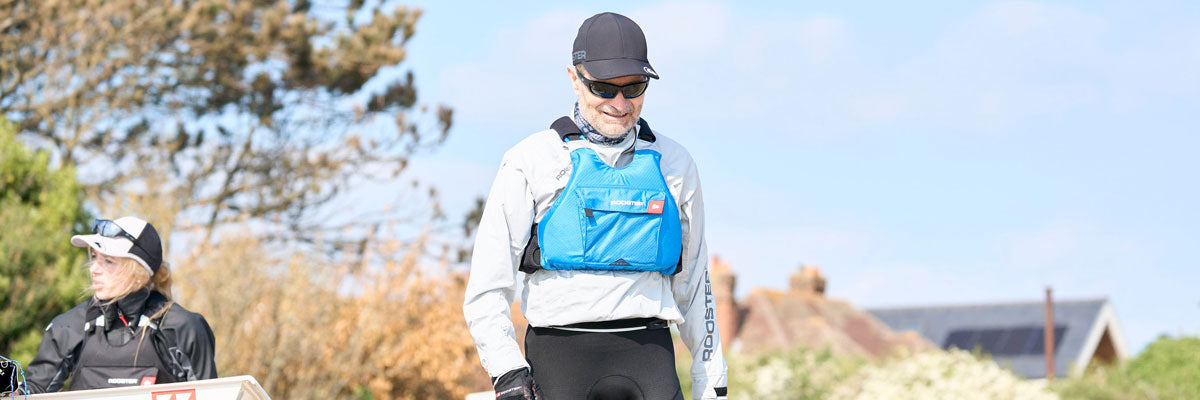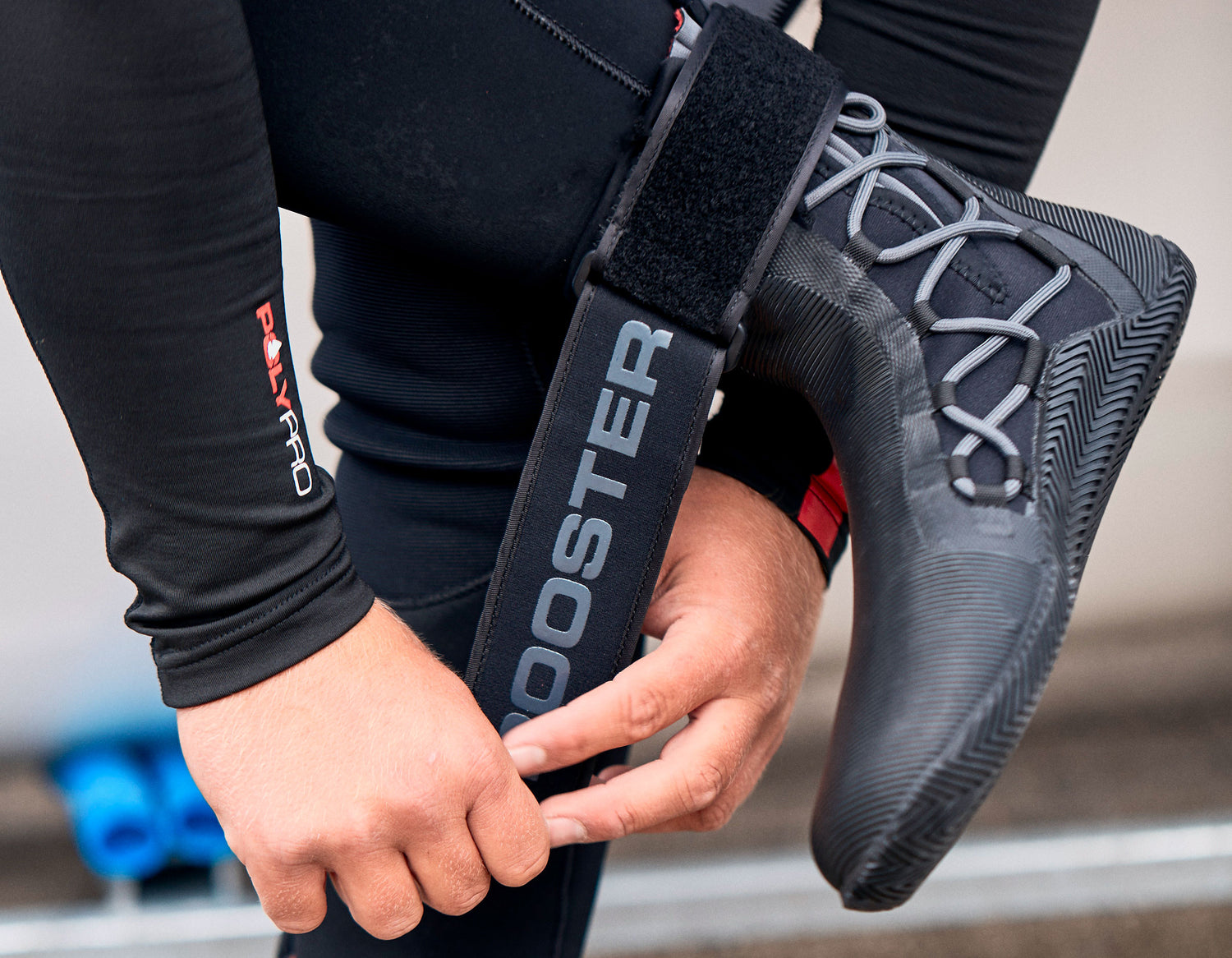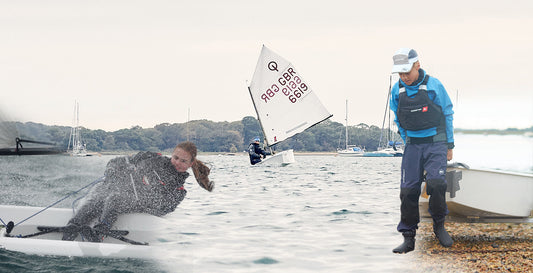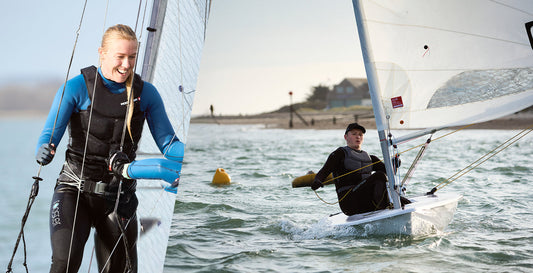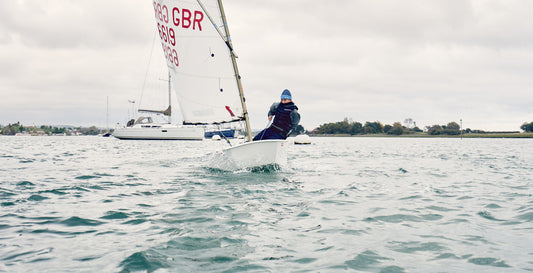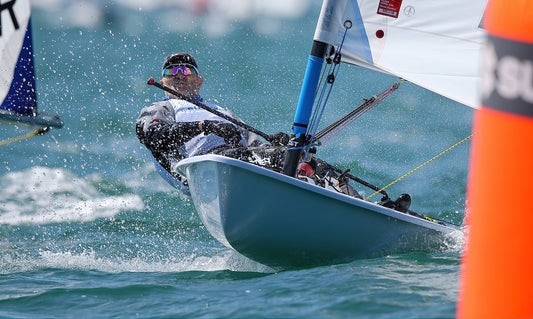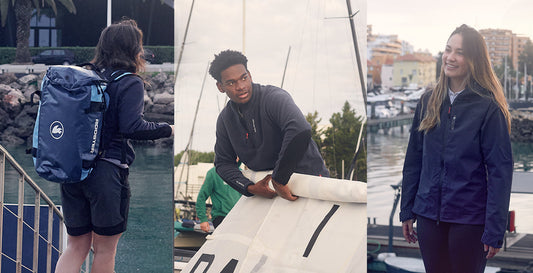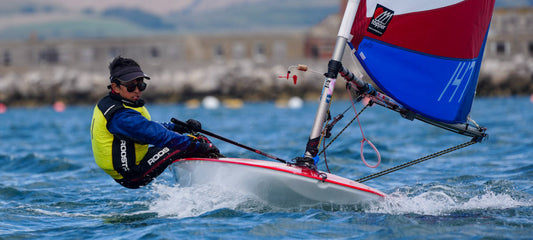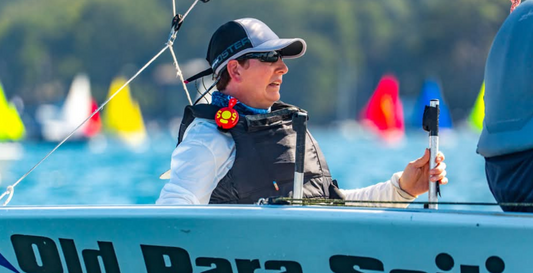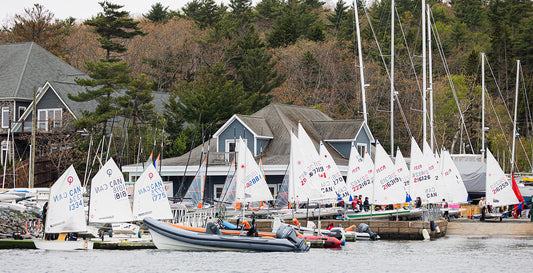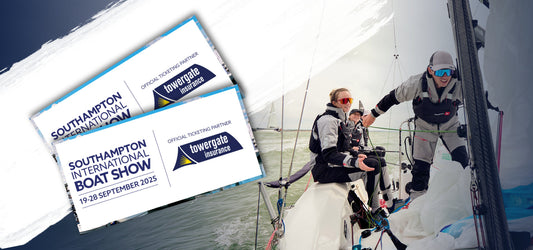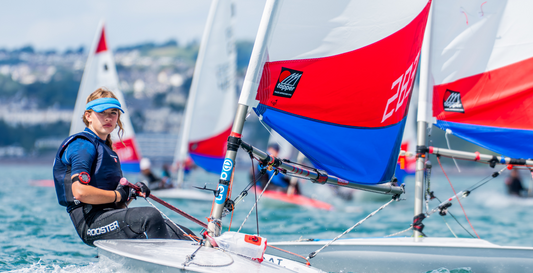Filtrar:
163 productos
Cortavientos Pro Aquafleece® (Unisex)
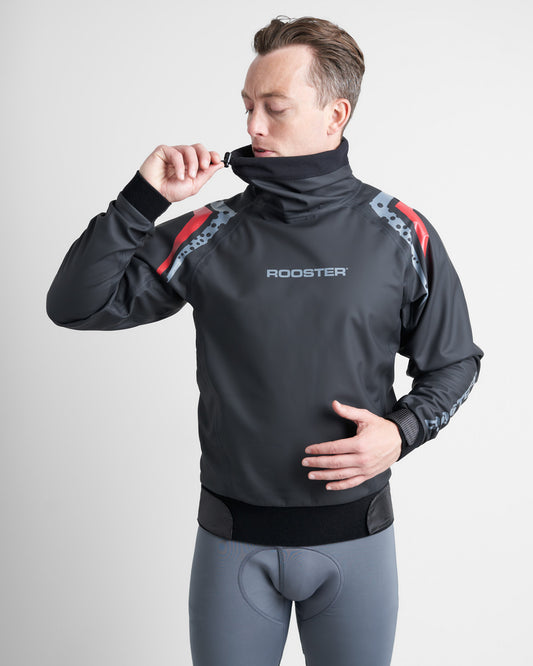

Cortavientos Pro Aquafleece® (Unisex)
Precio regular
108,00 €
Precio de venta
108,00 €
Precio regular
135,00 €
Leggings térmicos Rooster® PolyPro™
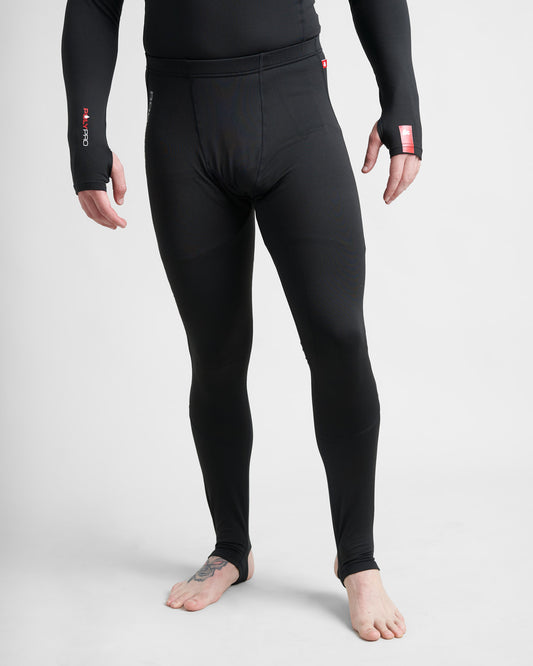

Leggings térmicos Rooster® PolyPro™
Precio regular
73,00 €
Precio de venta
73,00 €
Precio regular
Outlet – Technical Shorts
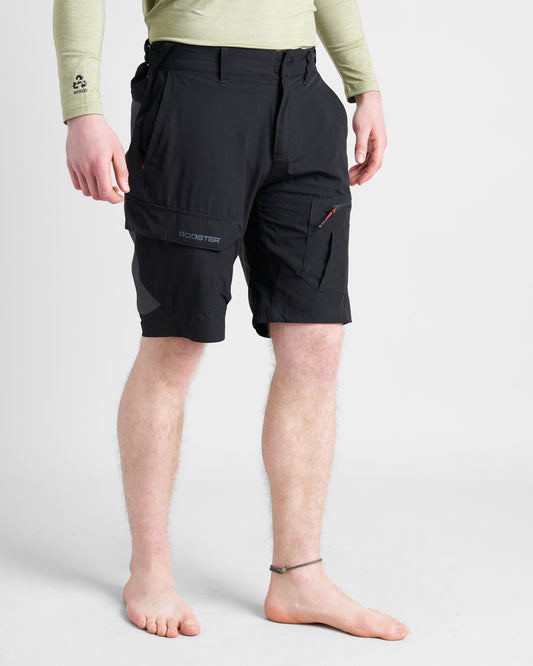

Outlet – Technical Shorts
Precio regular
78,75 €
Precio de venta
78,75 €
Precio regular
105,00 €
Cortavientos Pro Lite Aquafleece®
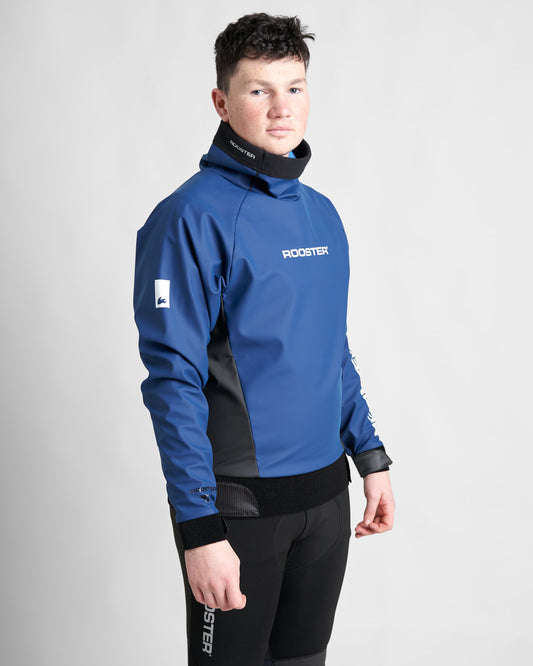

Cortavientos Pro Lite Aquafleece®
Precio regular
117,00 €
Precio de venta
117,00 €
Precio regular
Cortavientos Lightweight 2.5L Spray Top
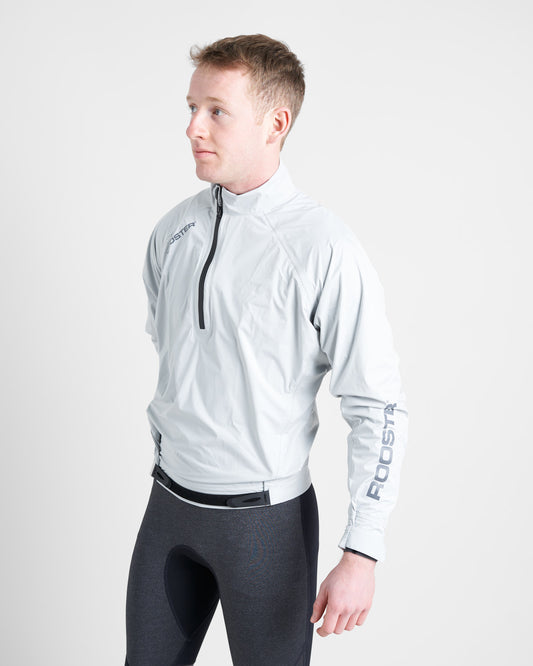

Cortavientos Lightweight 2.5L Spray Top
Precio regular
52,50 €
Precio de venta
52,50 €
Precio regular
105,00 €
Camiseta Manga Larga Quick Dry UVF50+ (Unisex)
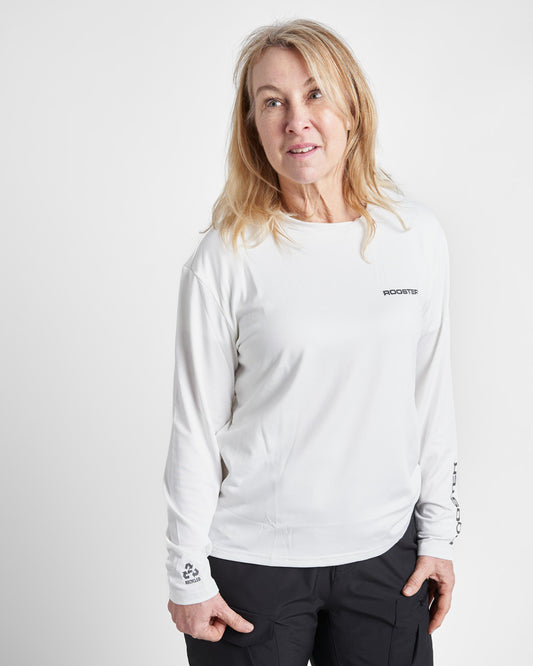

Camiseta Manga Larga Quick Dry UVF50+ (Unisex)
Precio regular
36,75 €
Precio de venta
36,75 €
Precio regular
49,00 €
Cortavientos Classic Aquafleece®
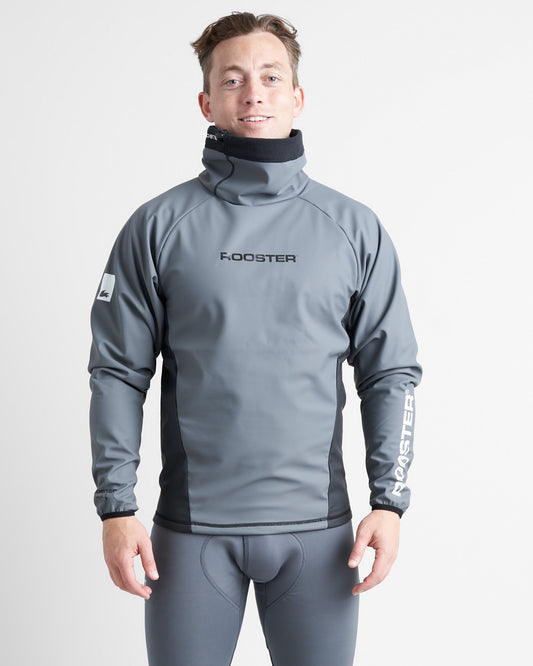

Cortavientos Classic Aquafleece®
Precio regular
83,00 €
Precio de venta
83,00 €
Precio regular
Chaleco salvavidas de Impacto Rooster® 50N CE (Unisex)
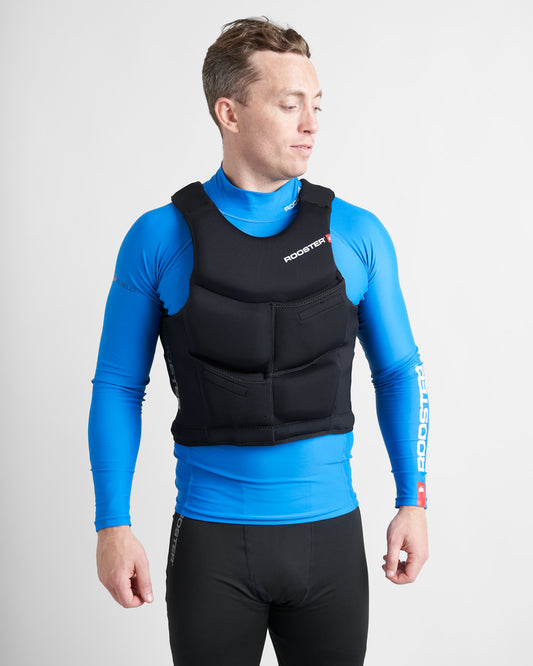

Chaleco salvavidas de Impacto Rooster® 50N CE (Unisex)
Precio regular
Desde 146,00 €
Precio de venta
Desde 146,00 €
Precio regular
Calcetines Rooster® Hot de 0,5 mm
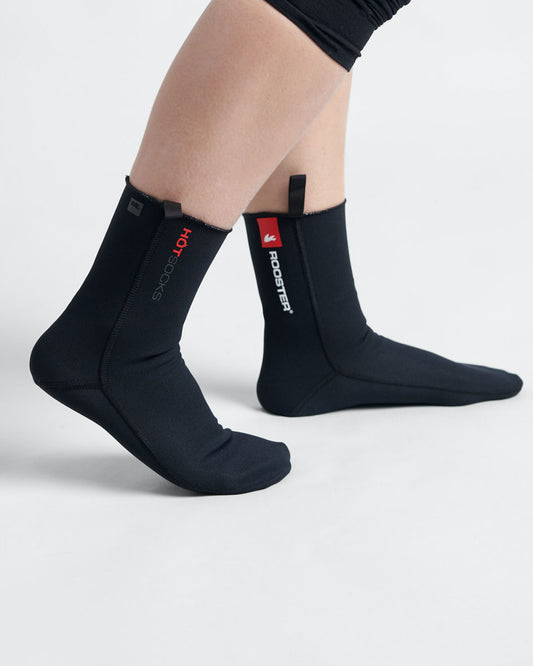

Calcetines Rooster® Hot de 0,5 mm
Precio regular
37,00 €
Precio de venta
37,00 €
Precio regular
Botas Rooster® All Purpose (Easy-Fit)


Botas Rooster® All Purpose (Easy-Fit)
Precio regular
92,00 €
Precio de venta
92,00 €
Precio regular
Blog posts
Sandy Point x Rooster: Nuevas bolsas para la Navidad 2025
Hace dos años nos unimos a Sandy Point — un pequeño negocio local situado a pocos minutos de la sede de Rooster — para lanzar una edición limitada de bolsas confeccionadas con velas reutilizadas para la Navidad de 2023. Lo que empezó como una colaboración puntual y festiva terminó convirtiéndose en algo mucho más grande.
Os encantaron las bolsas, os encantó la historia y os encantó la idea de dar una segunda vida a las velas.
Así que, en lugar de terminar con la temporada navideña, la Colección Sandy Point siguió su rumbo.
Y ahora, para la temporada de regalos 2025, nos hace mucha ilusión anunciar que la gama vuelve a crecer: cuatro nuevos modelos y nuevas combinaciones de color se suman a los favoritos originales.
¿Por qué velas reutilizadas?
Las velas viven vidas duras. Están expuestas al sol, la sal, la tensión y largas jornadas en el agua. Una vez que llegan al final de su vida útil en rendimiento, son materiales difíciles de reciclar y, en muchos casos, no tienen un “después”.
Ahí es donde entra Sandy Point.
Juntos hemos creado una forma de transformar estos materiales en bolsas prácticas, resistentes y duraderas, cada una con una historia cosida en el tejido.
Todas las bolsas Sandy Point incluyen una pequeña etiqueta interior que indica exactamente de qué vela proceden. Es una forma de reconocer su origen y recordar que nada se desperdicia.
Conoce a Rory, de Sandy Point
Rory es un navegante de los de verdad y, junto con su equipo en Sandy Point Chandlery, es quien está detrás de la creación de cada una de estas bolsas. Domina los cabos, los empalmes y todos los detalles del trabajo con cuerda… y además tiene ese aire tranquilo tan típico del mundo náutico.
Esto es lo que nos contó sobre la nueva colección:
“Trabajar con Rooster ha sido algo muy natural para nosotros. Estas velas ya han pasado una vida haciendo lo que fueron diseñadas para hacer, así que darles un segundo propósito tiene todo el sentido. Cada bolsa conserva un poco de esa historia en el tejido, y eso es lo que más me gusta del proceso: nada se desperdicia y la historia continúa. Ver crecer la colección demuestra que la gente valora productos bien hechos y diseñados para durar.”
¿Qué hay de nuevo esta temporada?
Hemos añadido cuatro nuevos estilos a la línea Sandy Point — pensados para la vida diaria, ya sea en el club de vela, en tus desplazamientos, de viaje o disfrutando de la costa:
Bolso de mano A5 – perfecto para documentos de viaje, tecnología pequeña y esenciales del día a día.
Cartera A4 – ideal para cuadernos, tablets y para mantener todo organizado cuando te mueves.
Monedero – pequeño, resistente y del tamaño justo para tarjetas, dinero, llaves u otros objetos pequeños.
Bolsa Premium para playa – un bolso de playa amplio y duradero, con asas de cabo, herrajes de acero inoxidable, base resistente al agua y bolsillo interior con cremallera.
También encontrarás nuevas variaciones de color en los modelos originales, inspiradas en la herencia costera de Rooster.
La Colección Sandy Point siempre ha sido algo más que bolsas. Trata de apoyar la artesanía local, reducir residuos y aprovechar materiales que aún tienen mucha vida por delante.
Al trabajar con un artesano local y dar un nuevo propósito a velas retiradas, demostramos que los materiales técnicos pueden transformarse en equipamiento duradero para el día a día sin comprometer la funcionalidad ni el diseño.
The 2025 Ultimate Gift Guide
Looking for the perfect gift for the sailor in your life?
Whether they’re out in all weathers, just starting their sailing journey, or living for those crisp winter training sessions, our Christmas Gift Guide brings together the best Rooster kit for every type of sailor. To make it even easier, we’ve added a simple icon guide—think Warmth, Waterproof, Travel, Beginner-Friendly and Budget—so you can match your search to exactly what they need. From smart stocking fillers to performance essentials, you’ll find gifts they’ll genuinely love (and actually use) on the water.
Give the All-Weather Warrior something that works as hard as they do. These gift ideas are all about serious warmth and protection—reliable, storm-ready kit that keeps them sailing comfortably through whatever the forecast throws their way.
Pro Aquafleece Top, Aquafleece Beanie, Hot Socks, Hot Hands
Christmas is all about the kids! For the Young Sailor in your life, think gifts that fuel their excitement for every launch and landing. These picks are fun, durable and confidence-boosting—perfect for keeping them warm, comfortable and ready to learn on the water.
Junior Overhead Buoyancy Aid, Aquafleece Neck Gaiter, Junior Microfibre Quick Dry Poncho, Combi Gloves
Treat Your Biggest Fan to something that says thank you for all those early mornings and long waits. These gifts are practical, cosy, and thoughtful—perfect for keeping them comfortable while they cheer you on from the shore.
Pro Aquafleece Rigging Coat, Aquafleece Robe, 35L Dry Back Pack, Sports Drink Water Bottle
Find something special without stretching your wallet with our Under £25 picks. Perfect as stocking fillers or little treats, these gifts are fun, useful, and sure to bring a smile to any sailor’s face.
Rooster Cap, Aquafleece Headband, 10L Drybag, Joey Water Bottle Holder
Discover our Under £100 gift picks—great for giving a little more without going overboard. These thoughtful, high-quality pieces are perfect for sailors who appreciate gear that’s both practical and a treat to unwrap.
35L Dry Backpack, Poly Pro Top, Changing Mat Bag, Microfiber Quick Dry Poncho
For The One That’s Always On the Go, give gifts that make life on the move easier and more enjoyable. From compact, travel-friendly gear to clever kit that packs a punch, these picks keep them ready for every adventure on and off the water.
50L Semi-Dry Duffel Bag, Sports Drink Water Bottle, 90L Carry All Bag, Shoreline Jacket
For Dinghy Sailors, choose gifts that match their love of speed, skill, and adventure on the water. From performance essentials to clever accessories, these picks make every launch, tack, and capsize a little more fun and a lot more comfortable.
Knee Pads, Pro Laced Boots, Pro Lite Aquafleece Top, 60L Dry Bag
For Keelboat Sailors, find gifts that enhance their time on deck and make every voyage smoother. From durable kit to handy accessories, these picks combine practicality with comfort for long days on the water.
SB1 Inshore Dry Smock, SB1 Inshore Jacket, SB1 Inshore Hi-Fits, 50L Semi-Dry Duffel Bag
For Last-Minute Shoppers, don’t panic—we’ve got your back! A Rooster gift card lets them choose exactly what they need, making it the perfect easy, stress-free present that still feels thoughtful.
Rooster Gift Card
No matter who you’re shopping for, there’s something in our Rooster Christmas Gift Guide to make every sailor smile. From stocking fillers to performance essentials, practical gear to travel-friendly treats, you’ll find gifts that are thoughtful, useful, and ready to bring joy both on and off the water.
Ropa de Invierno Infantil: Como mantener calientes a los jovenes navegantes durante toda la temporada
Cuando baja la temperatura, la navegación no tiene por qué parar. Con las capas adecuadas y el equipo apropiado, navegar en invierno puede ser tan gratificante como en verano, e incluso más.Para los regatistas más jóvenes, aprender a mantenerse abrigados y secos en el agua es una parte fundamental del aprendizaje en este deporte.
En Rooster, llevamos años desarrollando prendas que trabajan tan duro como quienes las usan: equipamiento diseñado para mantener a los jóvenes navegantes seguros, cómodos y con confianza ante el frío.
Por qué el equipo de invierno adecuado marca la diferencia
El frío puede arruinar o salvar una jornada de entrenamiento. Es difícil concentrarse en la táctica o en el control del barco cuando los dedos están entumecidos o no paras de tiritar. Una buena equipación por capas ayuda a los jóvenes a mantenerse seguros y confortables… y, sobre todo, a disfrutar cada momento en el agua.
Nuestra regatista de Rooster Rider Amelie Ballantyne lo resume perfectamente:
“Una vez que estás caliente y seco, todo cambia. Puedes centrarte en navegar, no en sobrevivir. Mi consejo es protegerte del viento: el viento frío del invierno es tu peor enemigo, y cuesta mucho entrar en calor si ya estás frío y empapado. Yo siempre llevo mi Pro Aquafleece® Top para mantenerme abrigada.”
Lo que recomiendan nuestros Riders
Preguntamos a nuestros Rooster Riders cuáles son sus mejores consejos para navegar en invierno — esas cosas que les habría gustado saber antes de su primera navegada invernal.
Sus respuestas coinciden en algo: si aciertas con las capas, navegarás mejor, más tiempo y con más disfrute.
El sistema de capas para invierno junior
Aquí tienes una guía sencilla que nuestros Riders siguen al pie de la letra:
1. Capa base – PolyPro o Hot Top & LeggingsUna base cálida, elástica y ligera que regula la temperatura corporal sin limitar el movimiento.
2. Capa intermedia (neopreno) – Supertherm 4 mm Longjohn y TopEl corazón del equipo de invierno.El neopreno crea una barrera térmica dinámica al retener una fina capa de agua que ayuda a mantener la temperatura corporal, ofreciendo además elasticidad y libertad de movimiento para la navegación activa.
3. Capa exterior – Aquafleece® Spray TopTu escudo esencial contra el mal tiempo, perfecto para llevar encima de la base.Protege del viento, la lluvia y los rociones, conservando el calor interior y evitando que el agua penetre.
4. Accesorios – Guantes, botas y gorrosA menudo subestimados, pero imprescindibles. Extremidades calientes = navegante feliz.
Comprar ropa infantil
Equípate para el invierno junior
Vístete por capas y sigue navegando.
Un buen equipo no solo te mantiene abrigado: te da confianza.Cuando los jóvenes pueden concentrarse en la técnica en lugar de en el frío, aprenden más rápido, disfrutan más y afrontan el invierno con ganas.
Eso es lo que más nos gusta ver en Rooster: jóvenes navegantes cómodos, seguros y preparados para cualquier condición.
Explora nuestra selección de prendas de invierno aprobadas por nuestros Riders y ayuda a tu joven regatista a mantenerse caliente, seco y preparado para todo.
Aprende más sobre cómo vestirte por capas en nuestra Guía de Capas
¿Por qué deberías pasarte a un neopreno de 4mm para navegar en invierno?
La navegación invernal puede ser una de las experiencias más gratificantes en el agua: mañanas despejadas, brisas constantes y olas más divertidas.Pero con las temperaturas más frías llega un gran reto: mantener el calor.Tu neopreno es tu primera línea de defensa, y elegir el grosor adecuado es clave para disfrutar al máximo.Aquí te contamos por qué pasarte al SuperTherm® 4mm puede transformar tu experiencia de navegación en invierno.
De un vistazo:
1. Cómo te mantiene caliente el neopreno
El neopreno funciona atrapando una fina capa de agua entre tu cuerpo y el traje.Tu propio cuerpo calienta esa capa de agua, creando una barrera aislante.Cuanto más grueso es el neopreno, mayor es el aislamiento térmico, lo que hace más difícil que el calor escape.
2. Por qué importa el grosor
El neopreno de 1,5 mm (como el de nuestra gama ThermaFlex) ofrece flexibilidad y comodidad para condiciones suaves o templadas.
El neopreno de 4 mm (como el SuperTherm) aporta un aislamiento térmico superior para los entrenamientos en frío, ayudándote a retener el calor durante sesiones más largas.
Piénsalo como la diferencia entre una chaqueta ligera y un abrigo de invierno: ambas tienen su función, pero cuando el frío aprieta, querrás llevar la capa más gruesa.
3. Forros avanzados para mayor calidez
La gama SuperTherm 4 mm no solo es más gruesa: es más inteligente.Sus forros interiores mejorados ayudan a evacuar la humedad, aportan más confort térmico y se secan más rápido entre sesiones.Esto significa menos sensación de frío cuando vuelves a ponerte el neopreno para la regata de la tarde.
4. El papel de las costuras: Flatlock vs GBS
No todas las costuras son iguales.
Las costuras Flatlock (usadas en trajes más finos como el ThermaFlex) son transpirables, pero permiten la entrada de pequeñas cantidades de agua, algo aceptable en condiciones templadas.
Las costuras GBS (Glued & Blind Stitched / pegadas y con puntadas ciegas), utilizadas en toda la gama SuperTherm, están selladas para minimizar la entrada de agua.Esto mantiene más estable la capa aislante y tu cuerpo mucho más caliente.
5. Diseñado para rendir en invierno
Muchos navegantes asocian un neopreno más grueso con menos movilidad, pero no es el caso del SuperTherm.Sus paneles están diseñados estratégicamente para ofrecer elasticidad y flexibilidad donde más lo necesitas, manteniéndote ágil y cómodo sin renunciar a la máxima calidez.
6. Cómo combinarlo con otras capas
La gama SuperTherm está pensada para formar parte de un sistema completo de invierno.Combínala con:
Capas base térmicas, como nuestros PolyPro o Hot Tops & Leggings: ayudan a controlar la humedad y añaden una capa adicional de aislamiento, atrapando aire y reforzando la calidez.
Prendas exteriores de protección, como Aquafleece® o SB1 Inshore Dry Smock: tu última barrera contra el viento y los rociones.
Juntas, estas capas crean un sistema completo que retiene el calor, te mantiene seco y preparado para lo que traiga el invierno. Descubre más sobre cómo vestirte por capas en nuestra Guía de Capas
No dejes que el frío te frene
Con el traje de neopreno adecuado, navegar en invierno puede ser tan agradable —o incluso más— que en verano.Nuestra gama SuperTherm 4 mm está diseñada para ofrecerte calor, comodidad y rendimiento, para que sigas navegando con confianza durante los meses más fríos.
Cómo abrigarte cuando entrenas en invierno
El invierno no significa que tengas que dejar de navegar o entrenar; solo significa que debes preparar bien tu equipo.Un buen sistema de capas te mantendrá abrigado, seco y concentrado en tu rendimiento, en lugar de en el frío.En Rooster, hemos perfeccionado nuestra filosofía de vestimenta por capas para que cada prenda funcione en conjunto, ofreciéndote flexibilidad tanto si estás compitiendo, entrenando en tierra o entrenando en el agua.
Puedes consultar nuestra guía completa de vestimenta por capas con consejos para todo el año, pero si lo que buscas es cómo vestirte específicamente en otoño e invierno, sigue leyendo.
La regla de oro: vístete como una cebolla
La clave está en atrapar el aire caliente cerca del cuerpo, mientras controlas la humedad y te proteges del viento y las salpicaduras.Cada capa cumple una función específica y, cuando las combinas correctamente, te ofrecen comodidad y rendimiento incluso en las condiciones más exigentes.
Piensa en ellas como tu segunda piel. Su función es regular la temperatura corporal y expulsar la humedad, manteniéndote seco incluso cuando el esfuerzo aumenta.
Capas base técnicas: tejidos suaves y de secado rápido que evitan el enfriamiento causado por el sudor.
Ajuste ceñido: evita espacios fríos y permite superponer otras capas fácilmente.
Recomendación Rooster: Hot Top & Leggings – el arma secreta de los navegantes en invierno.
Consejo experto: Evita usar camisetas o leggings de lycra como capa térmica: no aportan calor y pueden hacer que te sientas más frío.Cuando se trata de vestirse por capas, a veces menos es más.
Capas intermedias
Aquí es donde añades calor.Elige prendas flexibles, transpirables y que puedas quitarte fácilmente si las condiciones cambian.
Capas adaptables: ajusta el grosor del neopreno según la previsión.Cuando la temperatura baja de los 15 °C, opta por el SuperTherm® 4 mm Top y el LongJohn para obtener máxima calidez.En condiciones más templadas, las capas de ThermaFlex® 1,5 mm pueden ser suficientes.Si eres de los que sienten más el frío, añade una capa base extra para mayor comodidad.Y cuando el frío realmente aprieta, ¡puedes incluso doblar el neopreno!
Descubre más en nuestro blog sobre la diferencia entre las previsiones meteorológicas y la temperatura real en el agua.
Tu capa exterior es la barrera contra el viento, los rociones y la lluvia.Busca prendas con impermeabilidad, transpirabilidad y libertad de movimiento.
Recomendaciones Rooster:
Aquafleece® Spray Tops o SB1 Inshore Smock: perfectos para vela ligera.
SB1 Jacket o Pro Rigging Jacket: ofrecen protección total para navegar en crucero o monotipos de regata.
Tus manos, pies y cabeza son las zonas por las que más calor pierdes, por eso completar tu sistema con accesorios de calidad es fundamental.
Guantes y manoplas de neopreno: para mantener el agarre y el calor.
Calcetines de neopreno, combinados con tus botas de navegación, para tener los pies secos y calientes.
Gorros, beanies, bragas de cuello y pasamontañas: evitan la pérdida de calor por la cabeza y el cuello.
¿Lo sabías?
Según un estudio publicado en el British Medical Journal, si la cabeza es la única parte del cuerpo descubierta, puedes perder entre un 7% y un 10% del calor corporal.Un simple gorro o capucha puede marcar una gran diferencia en tu comodidad y resistencia en el agua.
Favoritos de los navegantes para el otoño/invierno: AquaPro Gloves, Hot Socks, Supertherm Beanie y Aquafleece Neck Gaiter.
Varias sesiones en un mismo día
Uno de los mayores retos del entrenamiento en invierno es cuando la jornada se divide en dos sesiones con un descanso entre medias.Ese parón a mitad del día puede ser el momento en que el frío se cuela de verdad, dejándote falto de energía, lento y desmotivado para la segunda parte.¿La buena noticia? Con unos cuantos hábitos inteligentes, puedes mantenerte abrigado, recuperarte mejor y volver al agua listo para rendir al máximo.
Consejos para mantener el calor entre sesiones:
Añade capas rápidamente: ponte una capa exterior cálida y cortavientos, como nuestro Pro Aquafleece® Rigging Coat o el Aquafleece® Robe, para retener el calor y evitar que el frío se instale.
Cambia tu equipo: lleva un par de guantes y calcetines de repuesto para ponértelos durante el descanso — manos y pies secos y calientes marcan una gran diferencia.
No te olvides de la cabeza: un simple gorro o beanie ayuda a retener el calor corporal y te hace sentir más abrigado al instante.
Recarga energía con cabeza: lleva comida adecuada y una bebida caliente para mantener los niveles de energía y una temperatura corporal estable.
Muévete un poco: una actividad ligera entre sesiones mejora la circulación y evita que el cuerpo se enfríe demasiado.
Evita las capas de lycra o rash vests: retienen el agua y te hacen sentir más frío.
Sé flexible: lleva en tu bolsa una capa intermedia adicional, además de calcetines y guantes de repuesto, para adaptarte a las condiciones.
Comprueba el ajuste: las capas deben quedar cómodas y permitir libertad de movimiento.
Cuida tu equipo: enjuágalo con agua dulce regularmente y déjalo secar completamente para alargar su vida útil.
Reflexión final
La navegación y el entrenamiento en invierno se basan en una buena preparación.Si eliges bien tu sistema de capas, te mantendrás abrigado, cómodo y listo para rendir, haga el tiempo que haga.
Consulta nuestra guía completa de vestimenta por capas y descubre más información sobre cómo adaptar tu equipo a diferentes condiciones aquí
Steve Cockerill explains: 'Follow-on' ILCA Training
My favourite training routine for small to medium sized groups is a ‘Follow-On’.
Rooster Autumn 2025 Collection | New Duffel Bag, Jackets, Fleece & Sunglasses
Autumn is a season of change — cooler mornings, shorter days, and crisp conditions on and off the water. It’s also the time when the right layers and reliable kit make all the difference. For the Autumn 2025, we’ve launched a brand-new line-up designed to keep you ready for whatever the season throws your way: the 50L Semi-Dry Duffel Bag, the Shoreline Jacket, the Polartec® Fleece, and Polarised Sunglasses.
Whether you’re heading to training, commuting, or escaping to the coast, these new arrivals are built to perform across every part of your lifestyle.
NEW IN:
When it comes to transporting kit, durability and reliability are key. The new 50L Semi-Dry Duffel Bag has been designed to handle the demands of everyday use and weekend adventures.
50-litre capacity: spacious enough for sailing kit, gym gear, or a weekend away.
Semi-dry construction: water-resistant materials keep contents protected from spray and showers.
Built to last: rugged fabrics and reinforced details ensure long-term reliability.
It’s the ideal bag for the sailor, coach, or anyone who wants one solution for their kit, wherever they’re headed.
👉 [Shop the Duffel]
The Shoreline Jacket brings together performance and versatility. Designed to bridge the gap between watersports protection and everyday practicality, it’s a lightweight, breathable jacket you can wear almost anywhere.
Water-resistant and breathable for comfort in unpredictable conditions.
Lightweight design makes it easy to wear on its own or over a fleece.
Everyday style that looks just as good on a coastal walk as it does on the daily commute.
It’s the kind of jacket you’ll keep by the door, ready for whatever the day brings.
👉 [Shop the Shoreline Jacket]
A dependable fleece is a year-round essential, but it really comes into its own in autumn. Our new Polartec® Fleece delivers premium warmth without bulk, making it perfect as a standalone piece or a layering option under waterproofs.
Made with Polartec® fabric for trusted quality and performance.
Warm yet lightweight, so you stay comfortable without overheating.
Versatile fit that works on the water, at the club, or in everyday use.
It’s practical, comfortable, and built to last — everything you need from a mid-layer.
👉 [Shop the Polartec Fleece]
Autumn brings low sun and dazzling glare, especially around the water. Our Polarised Sunglasses are designed to protect your eyes and improve visibility in these conditions.
Polarised lenses cut through glare and sharpen detail.
Lightweight and durable frames for all-day comfort.
Essential protection for training, coaching, or time outdoors.
They’re a small piece of kit that makes a big difference to comfort and performance.
👉 [Shop Sunglasses]
Ready for Autumn Adventures
From the tough new duffel bag to versatile layers and glare-cutting sunglasses, this 2025 collection has been designed with durability, comfort, and practicality at its core. Whether you’re preparing for time on the water, long coaching days, or simply making the most of crisp autumn weekends, this kit is built to move with you.
👉 [Explore all New 2025 Collection]
Sailing Sideways: How To Become A Double World Champion In Different Boats
This summer, I was lucky enough to win the Tera Sport World Championships, surprisingly making me the first person to be a double World Champion in both a Topper and a Tera.
Hansa World Championships: The Importance of UV Protection on the Race Course
Blog written by Kirsten Pollock, SKUD18 Sailor
Hansa are the largest manufacturer in the world of sail boats used by people with disabilities. The boats are designed to a Universal principle, with weighted keels, that allows anyone, whether young, old, able or with a disability to sail easily and safely, making sailing a very equal and inclusive sport.
Every two years the five Hansa Classes come together for an International and World Championships. The boats are named by metric size, the smallest is the 2.3, then 303 divided into one and two-person fleets, the larger Liberty and finally the fast and powerful Paralympic SKUD18.
The 2025 Hansa Worlds took place at Pittwater, near Sydney, Australia. Sixteen nations, with competitors from Australia, Chile, France, Germany, Great Britain, Hong Kong, Italy, Japan, Netherlands, New Zealand, Poland, Portugal, Singapore, South Korea, Spain and USA took part and, representing Great Britain in the SKUD Class, was me, crewed with top local sailor Brett Pearce who was Australian Reserve Crew for the 2016 Paralympics in Rio. Other illustrious names in the fleet were Dan Fitzgibbon, three times Paralympic Medallist, plus Asia Pacific SKUD Champion Neil Rowsthorne.
The Rooster clothing was brilliant, especially the long sleeved UV top, UV neck sleeve and cap helped protect me and my crew from the sun. I have fair skin and burn very easily so having the right clothing especially in strong UV conditions makes all the difference. I could focus on sailing rather than having to contend with sunburn etc.
After the regatta I went travelling and Rooster were with me every step or wheel of the way. I spent a few days in central Sydney. I then went to Uluru, from there I went to Port Douglas and went to the Barrier Reef, I wore Rooster kit in the water to protect me from the UV rays. I then went to Melbourne.
My Rooster kit proved to be the ultimate travel companion — keeping me protected, comfortable, and ready for whatever came next. Whether I was sailing in high-performance conditions or exploring some of Australia’s most iconic landscapes, having reliable gear made all the difference. I genuinely wouldn’t travel — or sail — without it.
A New Chapter in Canada: Rooster x RNSYS
11th August 2025
We’re proud to announce our new partnership with the Royal Nova Scotia Yacht Squadron (RNSYS)—the oldest yacht club in the Americas—marking the start of an exciting new chapter for Rooster in Canada. After beginning our support earlier this season, we’re now officially the Squadron’s technical clothing provider for 2025 and beyond, supplying high-performance apparel for sailors, staff, and major events both on and off the water.
Kicking Off with a Major Youth Sailing Event
Our first supported event under this partnership will be the Canadian Optimist Nationals, hosted at RNSYS from August 16–22, 2025. This premier youth sailing event will welcome some of the most promising young sailors from across Canada, and we’re looking forward to providing technical gear designed to keep them comfortable and performing at their best.
Looking Ahead – Foiling and High-Performance Sailing
Following the Opti Nationals, our partnership continues in October with the CANFOIL Cup—a key event on the Canadian foiling calendar. The regatta also incorporates the WASZP Nationals and Foiling Provincials, showcasing some of the most exciting and progressive aspects of modern sailing.
A Shared Vision for the Future
"We’re thrilled to be partnering with the Royal Nova Scotia Yacht Squadron—a club with deep heritage and a bold vision for the future of sailing in Canada," says Kate Morrison, Head of Marketing & Product at Rooster. "This is more than just a sponsorship; it’s a shared commitment to supporting all levels of sailing and foiling, from youth development to cutting-edge performance."
This partnership marks Rooster’s first major club collaboration in Canada, reinforcing our growing presence in North America and our dedication to supporting sailors at every level. Together with RNSYS, we look forward to building a strong future for the sport in 2025 and beyond.
Next up: Canadian Optimist Nationals – August 16–22, 2025Where: Royal Nova Scotia Yacht Squadron, Halifax, NS
Follow the action and event updates on our social @RoosterKit.
Rooster at Southampton International Boat Show – With a Fresh New Location!
This September, Rooster is returning to the Southampton International Boat Show – and we've moved! Our stand is now in a fresh new location with even more space to showcase the latest 2025 gear - including some of this years most exciting launches. You’ll find us right in the heart of the action – check out the map below to plan your visit.
What’s New?
We’ve been busy designing, testing, and launching innovative new gear for sailors and watersports lovers. Here's what's new at the stand:
Rooster Sunglasses – high-quality lenses, built for performance on and off the water.
SB1 Inshore Dry Smock – reliable and breathable outer layer, perfect for inshore conditions.
Coastal Hi-Fits – durable protection for coastal cruising without unnecessary bulk.
Waterproof Socks – because dry feet are happy feet.
SB2 Deck Trainers – designed for optimal performance in any environment, with unbeatable grip and comfort.
Microfibre Polartec Fleece – lightweight warmth, ideal for layering.
Upgraded Tech Shorts & New Women’s Tech Shorts – improved fit and function and now in a women's fit.
Swing by to try them on, check out the quality up close, and chat with our team – we’re always keen to talk all things kit.
Win Your Way In – 5 pairs of tickets up for grabs!
We’re giving 5 lucky Rooster fans a chances to win a pair of tickets to attend the show for free.
To enter, simply:
Follow us on social media
Like the competition post (check it out on Facebook and Instagram)
Share it on your story and tag @roosterkit
Tag the friend you’d bring along in the comments
Winners will be announced via DM from the Rooster official Instagram and Facebook pages – so make sure you’re following us on Instagram and Facebook to stay in the loop and enter your name in the draw.
Save £10 – Tell all your friends!
Want a discount on your ticket? Use code ROOSTERSAIL at checkout when booking your tickets to get £10 off via the Southampton International Boat Show Website. Share the code with your Yacht club, Sailing Club and all your friends to spread the word!
Rooster x Rockley Giveaway – Scan to Win
This year, we’ve teamed up with Rockley for an exclusive giveaway. Keep an eye out for Rooster x Rockley signs around the lake – Scan the QR code to sign up for your chance to win a £1000 bundle from Rockley and Rooster – the perfect way to stock up on essentials and book that sailing course or activity you’ve been dreaming of! (Terms and conditions apply).
We can’t wait to see you at the show. You'll find our exclusive show-only deals and our much-loved Outlet steals (get there early - they don't last long!)
More Than a Sport: Protecting the Waters I Sail On
Blog submitted by Rooster Rider Amelie Ballantyne, Devon UK
As a keen dinghy sailor, there is nothing I like better than getting in my (Rooster) wetsuit and jumping on my boat- it’s the best feeling in the world! However, over the past year, I have started to realise the effects that humans are having on the waters we use and the oceans in general. The statistics around pollution, climate change and habitat destruction are quite shocking, and unfortunately, the evidence of these statistics can be seen rather close to home sometimes- I often see dead wildlife/sea creatures, plastic pollution and sewage where I sail, and it’s not pleasant. As someone who loves using the water, this concerned me, and I wanted to help bring about change. However, I am only a 15-year-old dinghy sailor from Devon, so what can I possibly do to change this global environmental problem? So, to start with, I did my research and created a list of the simple things I could promote at my club (Starcross Yacht Club). Then, earlier this year, I became a Clean Sailors Ambassador and joined a community of international sailors who all want to raise awareness of ocean conversation and sustainable practices in the marine industry. I also joined the US SailGP Climate Action Academy that links students with A-list sustainable experts to learn about global matters. Using social media has been a great platform, and I have organised old sails and wetsuit collections, as well as helping to raise awareness about key issues. Thank you, ITCA Topper community, for your kind sail and wetsuit donations at NS5 Paignton.
Who are Clean Sailors and what do they do?
Clean Sailors is a non-profit organisation that strives to promote awareness around ocean conservation, amongst other things. Set up in 2020 by Holly Manvell, Clean Sailors share stories, research and campaign for environmental change in the marine industry. One of their big areas of focus is demonstrating what to do with old sails. Currently approx. 97% of sails end up in landfills each year, which is approximately. 2000 tons. This is a shocking statistic! Clean Sailors help direct people to local/global businesses that will take your old sails for recycling and repurposing to keep them out of landfills. Many innovative things can be done with old sails, from clothing and accessories, community shelters for schools and villages, to deckchair covers for the beach; creating a better great circular economy.
What can sailors do to help?
As sailors, most of us love the seas and rivers we use and would hate to think we are adding to a large-scale environmental problem, but unfortunately, the reality is that there are things that sailors do that have an impact on the environment around them. When it comes to change, even the small steps can make a difference if we ALL start to do them and work together. Think of the times you may have lost a sweet wrapper while doing a race or dropped your sunnies overboard never to be seen again, or that times you used electrical tape and a bit it’s blown away. Well, if every sailor did this, even by accident, the environmental impact would begin to be a big problem for waterways and communities that use them.
Here are my top six very easy tips for being a more environmentally conscious sailor:
1. The obvious one – use a reusable drinking bottle and not a single-use plastic bottle. Rooster sells great bottles, and most venues have refill facilities – easy!
2. Recycle your old kit: Don’t dump sails and wetsuits, and buy second-hand where and when you can.
3. Save water. After a sail, you don’t need to shower for hours, have a water fight or spend eternity washing your boat – turn taps off!
4. Use eco-friendly products. There are great boat cleaning products out there, as well as countless products for your body.
5. Take your rubbish home – use the correct bins – maybe have a snack that is not in a fiddly wrapper -Rule 55 guys! The disposable of trash
6. …….use a sunglasses strap/retainer to keep your sunnies on your eyes and not on bottom of the seabed.
I am very proud to be a Clean Sailors Ambassador and to be involved in helping with sustainability and change for our future and the longevity of water sports. In my opinion, educating people about the need to be sustainable and the impact each one of us has while doing the sport we love is important; creating new habits and making changes that benefit our whole environment. We all have a role to play; we all live here. It is great to see that even our top sailors in SailGP are getting on board with becoming clean, green sailors and leading the way with sustainability. I am also very proud to be a Rooster Rider, as Rooster is committed to ethical and sustainable business practices, which is important to




 Select Store
Select Store
 US
US
 UK
UK
